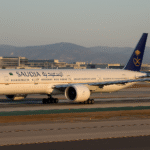Thailand Targets Middle East and Southeast Asia to Boost Tourism Amid Drop in Chinese Arrivals
As Chinese visitor numbers continue to decline, Thailand is pivoting its tourism strategy to strengthen ties with high-growth markets in the Middle East and Southeast Asia. The Tourism Authority of Thailand (TAT) is leading this strategic shift, which focuses on attracting affluent travelers and frequent short-haul visitors from these two regions to sustain its tourism-driven economy.
A Strategic Response to Changing Market Dynamics
China has long been Thailand’s largest source of international tourists. However, since the COVID-19 pandemic, outbound travel from China has remained sluggish, and economic uncertainties have dampened long-haul travel. According to the TAT, this decline has prompted Thailand to diversify its tourism portfolio and reduce reliance on any single market.
TAT Governor Thapanee Kiatphaibool confirmed that the Kingdom is actively enhancing its promotional campaigns and industry partnerships in alternative source markets to support its revised goal of 35 million foreign arrivals in 2025, down from the previously expected 40 million. Despite the dip, Thailand aims to maintain its tourism revenue target of 2.8 trillion baht, with 1.6 trillion baht projected from international travelers.
The Middle East: High-Spending Visitors with Growing Demand
The Middle East has emerged as a priority market due to its consistent year-on-year growth and high per-capita travel spending. Tourist arrivals from the Gulf region have increased by approximately 17–18%, according to the TAT. Visitors from countries such as Saudi Arabia, the United Arab Emirates, and Kuwait are increasingly viewing Thailand as a desirable destination for luxury, wellness, and cultural travel.
To meet the expectations of this market, TAT is working closely with airlines and tour operators in the Gulf Cooperation Council (GCC) region to promote customized packages. These initiatives include halal-friendly dining, private wellness experiences, family-focused resort offerings, and high-end shopping excursions in Bangkok and Phuket. Marketing efforts now also highlight Thailand’s positioning as a world-class luxury and cultural hub that aligns with Middle Eastern lifestyle values.
Southeast Asia: A Rapidly Growing Short-Haul Market
Closer to home, Thailand is also ramping up efforts to draw more regional travelers from Malaysia, Singapore, Indonesia, and Vietnam—countries with easy flight connectivity and a track record of frequent travel to Thailand. In the first half of 2025, Malaysian travelers accounted for one of the top visitor segments, supported by extensive cross-border accessibility and shared cultural ties.
To tap into this growth, TAT is rolling out regional campaigns with the tagline “Discover Thailand Again,” targeting millennial and Gen Z travelers with themed digital content, influencer collaborations, and affordable package deals. The campaigns emphasize Thailand’s affordability, vibrant festivals, diverse cuisines, and accessible cities like Chiang Mai, Krabi, and Pattaya.
“We are intensifying marketing efforts in Southeast Asia because it offers both volume and repeat visitation,” said Siripakorn Cheawsamoot, TAT’s Deputy Governor for International Marketing. “These are seasoned travelers who enjoy Thailand’s convenience and diversity.”
Air Connectivity and Travel Partnerships
Enhancing air connectivity is central to Thailand’s strategy for both Middle Eastern and Southeast Asian markets. TAT is collaborating with international airlines to introduce new direct routes and increase flight frequencies to major Thai cities. In 2025, direct services between Bangkok and Riyadh, Dubai, and Abu Dhabi are expected to increase significantly.
On the Southeast Asian front, low-cost carriers like AirAsia, Scoot, and Thai Vietjet are expanding routes to second-tier cities and beach destinations. This aligns with the TAT’s effort to promote more even tourism distribution across the country and encourage longer stays.
To support these initiatives, TAT is co-investing in joint promotions with airlines, offering discounted airfares combined with hotel packages, attraction passes, and guided experiences. According to the Ministry of Tourism and Sports, these collaborations are designed to drive conversion rates and make the travel process more seamless for visitors.
Adapting to a New Tourism Model
The reorientation of Thailand’s tourism marketing is not only a short-term fix but also a long-term transformation aimed at building resilience. By nurturing diversified markets and enhancing the quality of travel experiences, Thailand is laying the groundwork for a more sustainable tourism sector.
“The slowdown in Chinese tourism, while significant, is also a wake-up call,” said Chattan Kunjara Na Ayudhya, TAT Deputy Governor for Asia and the South Pacific. “Thailand must evolve to become more inclusive, more dynamic, and less dependent on any single source market.”
Thailand is also leveraging digital tools and AI-driven platforms to improve traveler engagement, streamline immigration, and enhance safety. These technologies will play a growing role in making Thailand a seamless destination for both long-haul and regional visitors.
Looking Ahead
With its rich heritage, natural beauty, and renowned hospitality, Thailand continues to be a favorite destination in Asia. However, its renewed strategy to engage Middle Eastern and Southeast Asian travelers demonstrates a proactive and flexible approach to shifting global tourism dynamics.
As Thailand positions itself as an elite destination for luxury, wellness, and short-haul getaways, the Kingdom is expected to remain competitive in the global travel market—despite the downturn in Chinese visitor numbers.
For more travel news like this, keep reading Global Travel Wire

















